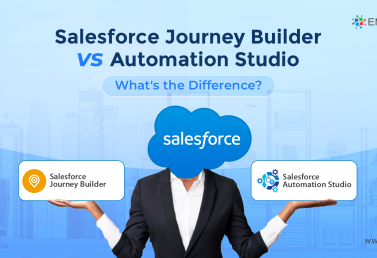Unlock Your Lead Nurturing with a CRM Strategy
Leads are potential customers, and most businesses have a lead nurturing program of some sort. Does your lead nurturing program lack sparkle? If so, maybe you haven’t implemented a strong customer relationship management (CRM) strategy for your business.
Fortunately, creating and implementing a CRM strategy is less stressful and more intuitive than you might think.
What’s more, your CRM strategy and lead nurturing tactics go hand in hand. This means that the steps you take to strengthen your customer relationship management will improve your lead generation and lead nurturing efforts.
Don’t let customer relations and lead nurturing stress you out. Instead, take a few simple steps—and ask yourself a few important questions—to elevate your CRM strategy.
Important Lead Nurturing Questions to Ask Yourself
Lead nurturing is an important piece of the sales puzzle whether you’re just getting your business off the ground or have been in business for years.
To restate the obvious, leads are potential customers. If you don’t take steps to maximize the impact you have on your leads—and do your best to turn those leads into customers—you’ll lose them. Working your leads through a marketing and sales funnel can take time and resources, but it’s usually worth the effort.
Having trouble getting your leads to convert? Ask yourself the following questions:
Does your current CRM build effective relationships with customers throughout the buying journey?
Make sure your CRM strategy lends itself to relationship building at every step of the buying journey. The more chances you give potential customers to get closer to your business and your brand, the easier it will be to convert them.
Do you consider your sales cycle to be too long?
Speaking of the buying journey, make sure to optimize yours so it’s not too long or complicated.
Consumers are savvier than ever, and they know when the juice isn’t worth the squeeze. Refine your sales cycle to maximize impact without overstaying your welcome.
Do you consistently convert sales inquiries into qualified prospects?
It’s your team’s job to qualify or disqualify prospects throughout the sales cycle.
Take steps to make sure that potential customers have a way to continue their journey toward conversion. Don’t let prospects stray too far from your funnel so that your sales team can work its magic.
Can you nurture prospects and customers online and offline via social media, events, and direct mail?
Find ways to nurture prospects both online and offline to keep those potential customers on the line, so to speak.
You don’t want the conversation to die once a potential customer steers away from your website or sales portal. Evaluate potential online and offline avenues—like social media, live events, and direct mail opportunities. Then use these to turn leads into customers.
Do you have a defined process for stale leads that purges the pipeline and then re-engages at the right time?
Not every lead will become a lifetime or even a one-time customer.
Include ways to abandon or re-engage leads that are going nowhere or just need a little extra effort. Some leads aren’t worth the time and resources to keep them engaged. Some leads are. It’s your job to define which are which and act accordingly.
Customer relationship management is a combination of all of the above and more. You’ll be prepared for the worst-case and best-case scenarios when your CRM strategy includes ways to engage, re-engage, or let go of leads.
Revisit Your CRM Strategy Regularly for Maximum Impact
New business owners often think all customers are the same, and experienced business owners can repeat the same failing processes while they hope for different results. In both cases, they should revisit how they handle customer relationship management.
Your business gets the most out of your CRM strategy when you review the customer journey on a regular basis. Make sure that you identify and understand all touch points and channels. To do this is, approach your strategy from the buyer’s perspective.
Create customer profiles to understand different buyer types and different buyer processes. Then, personalize the experience. Not every customer shops the same way, and you should find out how and why potential customers make purchases.
Take this process a step farther to improve your CRM and lead nurturing strategies. Revisit your data structure and sales process to identify where the buyer’s journey and your strategies misalign. When you know where the problem is, it’s easier to implement CRM changes and address issues that keep you from turning leads into customers.
Contact Empellor CRM today to learn how we can help you analyze your CRM setup and align it with your business needs.


